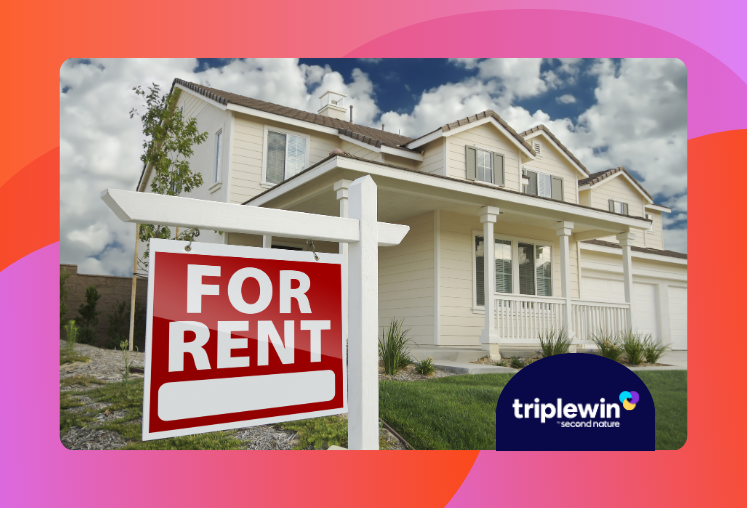Pest control plays a critical role in effective property management. That's because pests are not just a nuisance – they can also contaminate food, damage belongings, spread diseases, and make rental properties unlivable. In this blog, we'll cover the impact of pests on your property and residents' lives, practical strategies for controlling these unwanted guests, and the benefits of a preventive approach to pest management.
On hand to help us deliver these insights is Landon Cooley, the Co-Founder and CEO of Pest Share, a commercial pest control expert. Cooley's extensive experience in the pest control industry provides valuable knowledge on how property managers can effectively integrate pest control into their maintenance routines.
What you'll learn:
- Why preventive pest control is a smart strategy
- How to monitor and control pests on your property
- The responsibilities of property managers and residents in maintaining a pest-free environment
- Common pests, how they enter properties, and the importance of immediate action and resident education
By the end of this article, you’ll have a thorough understanding of the importance of pest control in property management and actionable steps to ensure a healthy, comfortable living environment for your residents.

Why Preventive Pest Control Is a Good Strategy
The most important part of pest control? Prevention. There are so many reasons that a good preventive pest control program can pay off for your company, your investor, and your residents. It sets professional property managers apart from the crowd.
Here are some of the top reasons why preventive pest control works.
Cost-effective in the long run
Investing in a preventive pest control plan can save significant costs in the future. While there is an upfront cost, it's generally far less than the expense of handling large-scale infestations or property damage caused by pests.
Prevents major infestations
Pests have a way of multiplying exponentially. A preventative approach can nip potential critter nightmares in the bud. By treating small issues promptly, you can prevent them from developing into major infestations that are difficult and costly to eradicate.
Enhances resident satisfaction
Preventive pest control contributes to a comfortable and healthy living environment. By keeping pests at bay, you increase resident satisfaction, which can lead to longer tenancy periods and positive word-of-mouth referrals.
Preserves property value
Pests can cause significant damage to the structure and aesthetics of your property. By keeping properties pest-free, you protect and preserve the value of the property. Property managers are, in the most foundational way, asset managers for their property owners. This is a critical way to protect those assets.
Reduces health risks
Many pests carry diseases that can pose health risks to your residents. A preventive approach to pest control helps maintain a healthier living environment by reducing these risks. It also protects you and your investor from liability associated with those health concerns.
Maintains reputation
Effective pest control is a key aspect of property management, and a preventative approach helps maintain a good reputation. It shows prospective and current residents that you are proactive and dedicated to providing a safe, comfortable living environment. Again, prevention sets you apart from hobbyists and amateur property managers.
How to Monitor and Control Pests in Your Property
Regularly scheduled inspections are the best mechanism for effective pest monitoring. Ideally, qualified personnel should conduct quarterly or biannual checks. These inspections will focus on identifying potential entry points for common pests, and might include checking for cracks in the foundation, gaps around pipes and wires, and proper ventilation in crawl spaces.
Maintaining open communication with residents is equally important. Encouraging residents to report any signs of pests, like droppings or unusual noises, allows for early intervention. Property managers should have a clear procedure for responding to such reports, ensuring a swift and effective resolution to prevent infestations from escalating.
Of course, understanding the problem only gets us halfway (if even!) to solving it.
As property managers, the responsibility of dealing with pest issues falls squarely on your team’s shoulders. Great property management companies employ a strategic approach to integrated pest management (IPM), minimizing the possibility of pests – and dealing with them immediately when there’s an issue.
Along with routine inspections, here are some of the top property management pest control trips we’ve handpicked from the industry.
Immediate action
Taking immediate action at the first sign of a pest problem is crucial. Delays can allow the pest population to grow, making the issue more difficult and costly to handle.
A quick response to reported issues shows your residents that their comfort and safety are a priority and can often prevent minor issues from escalating into serious infestations. Whether you call an exterminator or handle it in-house, a swift response is key.
Tenant education
Educating tenants on proper food storage and waste disposal can drastically reduce the attractiveness of your property to pests. Regular communication about cleanliness and preventative measures empowers residents to contribute to a pest-free environment.
Professional pest control services
Sometimes, professional intervention becomes necessary. Pest control services can effectively deal with large infestations, employing safe and targeted solutions. They can also provide expert advice on preventing future infestations.
Cooley says it’s important to understand what specializations pest control companies offer when hiring.
“There are several different segments of the industry, and not all companies do everything,” he says. “Some do only residential insect control, or maybe rodent control. Some are very robust and specialize in all these areas. Every company is a little different.”
Landscaping and exterior maintenance
Maintaining the exterior of your properties is as crucial as looking after the interior. Regularly trim overgrown plants, manage water drainage effectively, and keep outdoor trash areas clean to deter pests.
Seal entry points
Prevent pests from entering by regularly checking for and sealing any potential entry points. This includes filling cracks, fixing broken screens, and covering crevices. Keeping your property in good repair helps make it less accessible to pests.
Proper waste management
Secure and timely waste disposal is key to pest prevention. Ensure that all trash bins are properly covered and regularly emptied to avoid attracting rodents, insects, and other pests.
Each of these methods contributes to effective pest control, helping to create a comfortable, pest-free environment for your residents.
Property Management Pest Control Concerns
Who is responsible for pest control?
The responsibility for pest control can vary depending on the state and the specific situation. In many states, landlords are largely responsible for maintaining a habitable dwelling, which includes addressing existing pest infestations and taking preventative measures. However, some states place more responsibility on residents, especially if the infestation arises from unsanitary conditions within the unit or from a tenant's actions that attract pests.
Lease agreements often address pest control by outlining each party's obligations. It's important for both property managers and tenants to understand these clauses to avoid confusion or disputes.
What are the most problematic pests?
In terms of structural damage, termites and rodents are high threats due to their ability to gnaw and burrow. Ticks pose significant health risks as they can transmit diseases. For general nuisance and quality of life issues, cockroaches and bedbugs are common culprits. Ultimately, the most problematic pests will depend on the specific location, property type, and potential health risks.
Do I need preventive pest control?
If the properties you're managing have historically had pest problems, or are situated in an area with frequent infestations, then proactive measures will certainly be beneficial. Regular inspections and preventative treatments can offer peace of mind and potentially save money by stopping infestations before they start. Even if you haven’t had any issues, a purely reactive approach can end up costing you.
How can pests enter my property?
Pests can enter properties in a surprising number of ways. Cracks in foundations, gaps around windows and doors, holes created by utility lines, and damaged vents are all potential entry points. Even seemingly small openings can be enough for some persistent pests, like rodents and insects. Additionally, pests can hitchhike inside year-round on cardboard boxes, used furniture, or on pets.
Why Property Management Pest Control Is Important
When we talk about property management, pest control isn't just an afterthought—it's a crucial component of providing the peace of mind that comes with a safe and comfortable living environment. Dealing with these “visitors” is important beyond just the ick factor.
“The pest control industry only serves 15% of US residents, and yet 86% of US residents have an experience of pest infestations every year,” Cooley says. “So there’s a big gap.”
Let's delve into some of the key reasons why pest control is so important.
Pests contaminate food
Many pests, such as cockroaches, ants, and rodents, are notorious for finding their way into food supplies. They can carry harmful bacteria and other pathogens, contaminating food and cooking surfaces. Mouse droppings, for example, can spread disease, in addition to just being … gross.
This can potentially lead to foodborne illnesses amongst residents, causing unnecessary discomfort and potential health issues.
Pests destroy property
Pests like termites and carpenter ants can cause costly damage to the property structure, eating away at wood and compromising the integrity of the building. Other pests may gnaw through electrical wiring or insulation, leading to costly repairs.
By maintaining consistent pest control measures, you can prevent such destruction and safeguard your property, making it a more secure and stable environment for your residents.
Pests destroy residents’ belongings
Some common pests, like carpet beetles or silverfish, may seem small and harmless, but they can wreak havoc on a resident's personal belongings. These pests can destroy everything from clothing and books to upholstered furniture, causing financial stress and discomfort to your residents.
Pests spread diseases
Pests are known carriers of a variety of diseases and can be a public health risk. Rodents can spread hantavirus and salmonella, mosquitoes transmit West Nile virus and Zika virus, ticks carry Lyme disease, and fleas are known to carry several diseases or allergic reactions, to name a few. Roaches carry any number of bacteria and diseases.
Keeping these pests at bay is critical to maintaining the health and well-being of your residents.
Pests make it difficult to live
Beyond physical health risks, pests can create an uncomfortable, even distressing, living environment. The presence of pests can lead to anxiety and sleep disturbances, negatively affecting residents' quality of life.
Pests like fleas and bedbugs cause physical discomfort if not outright health problems, and many pests, like mites, spread or trigger allergens.
In short, effective pest control is essential to maintaining the integrity of your investors’ property assets, the health of your residents, and your reputation as a caring and responsible property manager.

How Much Does Pest Control Cost?
The last, and sometimes biggest, hurdle when it comes to pest control? Cost.
General pest control methods can cost hundreds of dollars per service. Here’s an average breakdown for budgeting purposes:
- Cockroach/flea treatment: $350-$750 per service
- Bed bug treatment (heat): $1500+ per service
- Bed bug treatment (chemical): $1000+ per service
- Rodent trapping service: $250+ per service
- Quarterly general insect service: $40-$50 per month
How can property managers find a cost-effective solution that drives value and comfort for their residents without breaking the bank?
Throughout his years of experience, this is the question that Landon Cooley found was nagging the property managers he met.
“We wondered: Can we take these specific pain points – bedbugs or cockroaches or fleas – and find a solution that we can build into our Resident Benefit Program?”
Property Management Pest Control Solutions
Cooley’s solution? He co-founded Pest Share, which is a new service in Second Nature’s fully managed Resident Benefits Package.
The Pest Share model is a subscription model that works like a co-op: everyone pitches in, and the collected funds go to the more expensive parts of the plan without burdening any one client with too much cost.
Property managers simply select the Pest Assurance plan from four tiers of service levels. They add that plan to their RBP or OBP and pay a flat rate for it, which they can also roll into their overall RBP ancillary fees. Their residents can then go directly to Pest Share on their mobile phones to get pest services for no cost.
“What we’re offering is unique, on-demand, and very tech-forward. Pet Share gives quick access to service but allows us to offer cheaper price points for the same end result,” Cooley explains. “Our approach is, 'How can we take this off the property manager’s plate?’ We aim to create ancillary revenue for them, take an annoying task off their list, and enhance the resident experience.”
The result? Pest Share has helped their property management clients increase their Benefit Package ROI by 75%.
For Second Nature, including Pest Share’s model in our Resident Benefit Package – and upcoming Investor Benefit Package – was a no-brainer.
Learn more about Pest Share by getting in touch, or read our latest study on the impact of our RBP on the resident experience.
Topics:




